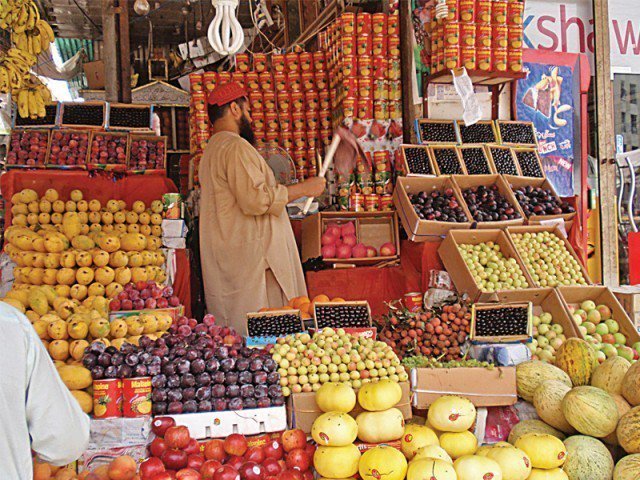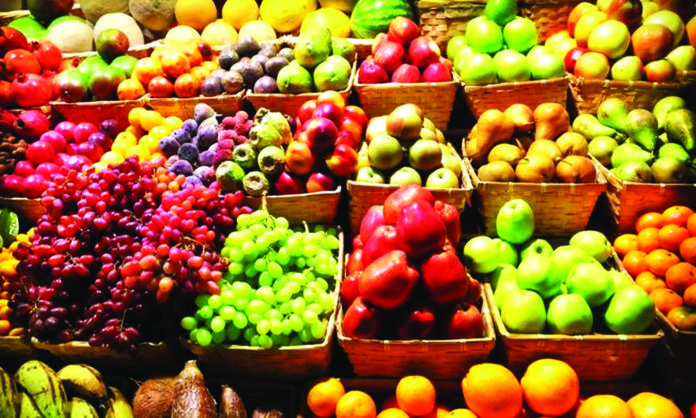Pakistan is climatically capable of growing fruits easily and in abundance. Evidence for the growth of fruit and vegetables in the subcontinent has been provided from ancient times, citriculture is known from the Indus valley for some 4000 years. The climatic diversity is such that it allows cultivation of nearly all types of fruit temperate, tropical and subtropical. Apple, apricot, cherry, peach, pear, plum, grape, strawberry and currant are temperate fruit; banana, mango, guava, papaya and tamarind are tropical fruit that cannot stand even light frost and date, fig, orange and pomegranates are subtropical fruit.
Because of high prices and low awareness among the poor, fruit consumption is less among urban and rural poor while the upper income group consumes fruit well above the average. The estimates of per capital consumption of fruit are about 33kg/ year which is below the minimum level necessary for favourable basic nutritional value. A Gallup investigation in 2019 established that only 26% of the population consume fruit every day. This is much too less given the fact that fruit consumption supports bodily as well as the mental health of people. That is why the consumption of fruit has to be encouraged for its beneficial impact on public health.
Pakistan is the sixth largest producer of Kinnow (mandarin) and oranges in the world. Constituting 80% of the citrus fruit Kinnow and is a major export commodity exporting a record 370,000 tons amounting to $222 million in 2017 compared to 325,000 tons in 2016. Pakistan grows citrus fruit over an area of 206,569 hectares in all the four provinces with total production of around 2.5 million tons as per 2015-16 statistics. Punjab produces over 98% of the fruit mainly in Sargodha district because of its favourable growing conditions and adequate canal and sub-soil water. The application of modern techniques and traditional practices at all stages of growth and during the post-harvest phase adds value to the fruit which attracts premium prices and also increases exports fetching foreign exchange. The Citrus Research Institute in Sargodha is responsible for undertaking “research and development” work on kinnow and other citrus varieties, besides the Pakistan Agricultural Research Council (Parc). During recent years Pakistan has lost its foremost position in kinnow production because of diseases resulting in low yield, poor quality of fruit and the lack of international compatibility with the much liked seedless kinnow. Pakistan may lose even the existing export markets if challenges are not adequately and timely addressed.
Like other crops, the citrus is also attacked by a variety of insects, pests and diseases. Some of these insects, pests and diseases not only affect quality and quantity of the produce, but also hurt the plant life. In addition, Pakistani citrus orchards have a lower life cycle as compared to other citrus growing countries. There is no dedicated citrus breeding centre in the main growing area of Sargodha (which shows badly the work of kinnow research) and the nursery stock obtained from existing mother trees is weak, infested with diseases and is of inferior quality. Therefore, the orchards established with the help of such saplings are not good for getting higher yields and producing quality kinnow. Citrus growers in Sargodha have reported a poor outreach programme of the Agricultural Extension Department. Lack of awareness among the growers of selecting and planting quality saplings, lack of proper traditional practices like pruning, field operation, timely watering, disease control and other operations may lead to the loss of yield as well as quality output. There is a need to quickly initiate the development of improved varieties and for the purpose, Parc as well as the Citrus Research Institute Sargodha and provincial agriculture departments should join hands.

The fruit par excellence of the subcontinent. Pakistan produces over 150 varieties of mango. The soil and climatic conditions of Pakistan are highly suitable for mango cultivation. According to FAO production year book of 2001, Pakistan stands FIFTH among mango growing countries of the World. The area under mango crop has increased but the rise in production is comparatively slow. The main mango growing districts in the Punjab province are Multan, Bahawalpur, Muzzaffaragarh and Rahim Yar Khan. In the province of Sindh, it is mainly grown in Mirpur Khas, Hyderabad and Thatta, in the province of NWFP it is grown in Peshawar and Mardan. The climate of Sindh gets warmer about one month earlier than the Punjab which has given the province the privilege to grow early varieties of mango. Subsequently, a new trend of growing late varieties in Punjab has received a wide popularity which has extended the market period and added to the exportable surplus.
The production of mangoes rose in 2019 to 1.5 million tons, worth a reported $80 million, up from 1.3 million in 2018. Pakistan is the world’s sixth-largest exporter of the fruit. The Middle East remained the top export destination for Pakistani mangoes, accounting for over 70 percent of the share of total mango exports last year. The premium varieties like Chaunsa, Sindhri and Anwar Ratol were most liked in the Middle East, because of their special flavour and aroma.
A very nutritious, aromatic and delicious fruit, Apple. It is very rich in Vitamin C, B and A. It contains about 11% sugar besides essential minerals in appreciable amounts. It has colour appeal, appetite and is most refreshing. It can be used in many different ways. It is cooked, made into preserves, Jellies, candied, canned, prepared as fresh apple juice, made into cider or vinegar. The peel is used for making pectin. In spite of some serious pests and disease problem there is an increasing trend for bringing more area under apple because of better returns.
Apple grow in more temperate climate. That is why Baluchistan is the key contributor of Apple production while KPK with contributing 25 percent of national Apple growth stands on second number. For apple production, rain is the main element. If it does not rain, the tree would not provide the fruit that is why apple-producing areas are not plane lands but its gardens are located in mountain region. Apple productions in Baluchistan are increased due to scientific research-based farming implemented there. By using this research, Baluchistan’s apple is in high demand and in addition its per acre production has also increased. There is a need of this type of research and implementations in other provinces too, especially in Swat where Apple production has decreased.
These examples of fruit produced in Pakistan have one feature in common: while climatic conditions are favourable for cultivation production results are in all varieties below average and in general sinking. There is an overall need for more research so as to enable orchards to produce more and defend the fruit from diseases that diminish yield and damage quality of fruit and plants. In order to achieve that policy outlines have to be developed and research institutions have to be supported so that improved results could be achieved. In that way fruit can be made a valuable export article and an even more needed addition to a balanced and healthy diet of Pakistani population.
Contributed by:

Dr. Bettina Robotka, Former professor of South Asian Studies, Humboldt University, Berline.




